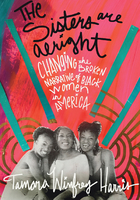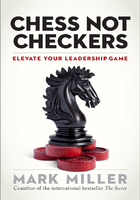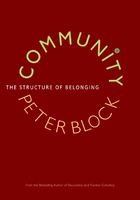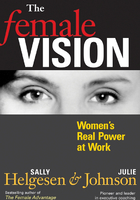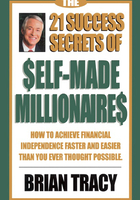COMING TO CITIZENSHIP IN A NEAR-GLOBAL AGE
At 8 a.m. on September 11, forty-year-old Fekkak Mamdouh was asleep, having worked the previous night's late shift from 4 p.m. to 12 a.m. His wife, Fatima, lay beside him; she had dropped off their daughter at kindergarten four blocks away and then climbed back into bed. For six years, Mamdouh, whom everyone knew by his surname, had been a waiter at Windows on the World, the luxury restaurant on the 107th floor of the World Trade Center's North Tower. He had started working there in 1996 when Windows reopened after the 1993 terrorist bombing in the building's basement. Mamdouh's wide brown eyes and the round apples of his cheeks gave him a disarming look of innocence. These mellow features hid the scrappiness that had made him a beloved, though sometimes controversial, union leader.
The first call came from Mamdouh's sister Saida, who lived in Italy. She told him to turn on the TV. The second call was from his brother Hassan, who lived down the street. “Listen, brother, there was a plane that just crashed through the Twin Towers,” Hassan said. “Guess what? You're not going to have a job for a couple of months while they fix the place.”
Mamdouh and Fatima turned on the TV thinking of terrible accidents when the third call came—their neighbor telling Fatima to get their girl out of school. Fatima hurried to retrieve her daughter Iman. When she got back, Mamdouh was still transfixed by what was flashing across the television screen. He said, “You watch. They're going to say it's Muslims.”
Fatima asked him why he thought so.
“Because they did it in ninety-three,” he said, referring to the earlier attack.
Without eating, Mamdouh left their house in Astoria, Queens. He went to 8th Avenue and 44th Street, the offices of his union, Local 100 of the Hotel Employees and Restaurant Employees (HERE). He and other union members made two lists: one of all the workers who would have been catering breakfast for Risk Management employees that morning, and another of all the places they might be found. Then teams of shop stewards and union organizers set off to search for the workers and track their families. Mamdouh paired up with a colleague, an Egyptian immigrant and now former captain at Windows. The two started out at hospitals, asking who had been brought in. They met many families of people who had worked at the World Trade Center, but they found no actual casualties of the attacks. They made their way down Manhattan's West Side, where all its hospitals are located. After the fourth one, Mamdouh's companion, who had been crying steadily, said he couldn't take any more. He went home, while Mamdouh headed to the morgue on First Avenue and 30th Street, staying there until 3 a.m.
The following night, Mamdouh gave an interview to a cable news channel. One of his friends, another Moroccan, saw the interview and called him the next day to ask why he hadn't said that Muslims—meaning regular, real Muslims like them—hadn't done this thing. Mamdouh told him that people already knew.
For the next five days Mamdouh ate and slept very little. He spent hour after hour circling the morgue's lobby carrying a sign: “If you know anyone who worked at Windows or if you worked at Windows, please call the union.” Mamdouh was able to cross barback Mario Pe?a's name off the missing list on September 12, and he found cashier Faheema Nasar a full week later, but in the end, seventy-three of his co-workers weren't coming back.
A couple of days after the attack, Mamdouh and Fatima went to their neighborhood Pathmark store. She had covered her head in hijab, as she had since her mother died three years before. It was evening and the store was not at all crowded. They were the only people wanting to buy fish, and Mamdouh stood at the counter with her while she tried for several minutes to get the fishmonger's attention. Eventually, Mamdouh's patience gave out.
“Hey, she's trying to talk to you,” he said to the clerk, who continued to ignore them. “She's trying to ask you a question.”
“Don't you know what you guys did?” was the response.
“What?”
“The World Trade Center.” It was a mumble, but Mamdouh heard it clearly enough.
He snapped. His eyes widened, his smallish frame puffed up.
“What are you talking about, what we did? I lost seventy-three of my friends there. Maybe you didn't lose anybody, and you don't know what you're talking about.” The clerk backed up from the counter while Mamdouh yelled, “I want to see the manager!” He yelled some more at the manager, who apologized. Neither Mamdouh nor Fatima would ever return to that store.
Something shifted in Mamdouh that day. The clerk's accusation had wounded him. Two days after the tragedy, he was ever aware that he himself could easily have died. He suffered for the loss of his colleagues, and the idea that someone would associate him with their deaths because he was Muslim was shocking. Until then, he had been living the life of a lucky immigrant, getting great jobs in high-end restaurants because he spoke fluent French. He had come to the United States to make money and to be near his younger brother, and although he missed Morocco, he had felt American enough to marry here and have two children who were born U.S. citizens. Despite his prediction to Fatima that Muslims would be blamed for 9/11, he had actually managed to get by for twelve years without noticing American discrimination in a daily way, not toward black people or Asians, and certainly not toward himself. Now he rewound his history, noticing things that he hadn't clearly seen before. He couldn't yet know, however, that these new insights would reshape his life as an immigrant worker in America.
Wall vs. Amnesty: Old Debates and New Perspectives
This book tells the story of modern immigration through the life of Fekkak Mamdouh, an ordinary, if somewhat fortunate, immigrant who found himself at the center of historic events. Situations like his have given rise to a contentious debate across the United States about immigration and the purpose of contemporary policy. Politicians, media pundits, populist organizations, and policy advocates have focused either on stopping unauthorized immigration or on legalizing undocumented immigrants. The current discussion prompts seemingly discrete questions. How big should the fence along the southern border be? Should undocumented immigrants be allowed to correct their status, and if so, how easily? The debate is intensely polarized, yet too narrow to lead us to real solutions.
The wall-versus-amnesty framework hides the far more fundamental question: Should the United States continue to welcome immigrants in large numbers? To answer that question in a humane manner that promises the best possible outcomes for both immigrants and current residents, for both the United States and for the countries that send immigrants, we need a holistic new framework within which to plan future action.
Substantial numbers of people are making new homes in this country. Each year, about 1.5 million come here to live and work. The largest single group, comprising about 40 percent, come from Mexico; the rest arrive from other countries of the Global South or former Eastern Bloc European countries, including India, China, the Philippines, Cuba, Vietnam, the Dominican Republic, Korea, Colombia, and Ukraine. Worldwide, immigrants have been a major source of economic support to their home countries; 190 million people sent $300 billion to their countries of origin in 2006.[1] Immigrants also make enormous economic contributions to their new countries.
Demographers and sociologists estimate that two-thirds of these 1.5 million immigrants arrive with official sanction; the rest either cross the border without documents or overstay tourist visas. It is impossible to know exactly how many immigrants are undocumented, since the Census Bureau doesn't ask about immigration status. The most commonly quoted source of projected numbers, the Pew Hispanic Center, calculates a national figure by subtracting citizens and legal residents from the total population reported by the Census Bureau. Using admittedly limited projection techniques, demographers generally believe that between 7 million and 13 million undocumented people now live in the United States, and that the number grows by 500,000 or more each year. The Pew Hispanic Center estimated 11.1 million in 2005 and as many as 12 million in 2006.[2]
Participants in the mainstream debate on immigration typically take one of two sides: a secure-the-borders/punish-the-“illegals” side, and a side that argues that we should legalize undocumented workers and improve the immigration system. On the punitive side, immigration restrictionists make three arguments. First, they assert that the country cannot bear the growing material burden of illegal immigrants; second, that illegal immigrants threaten the American public's psycho/social sense of identity; third, that lax immigration policy has enabled terrorists to enter the country. While restrictionists who advance these arguments largely focus on unauthorized immigration, they have also opened the door to proposals to limit legal immigration.
In making their fiscal and economic argument, restrictionists express concern about the ability of our public school systems to absorb so many non-English speakers, and about our public hospitals' having to provide emergency care to the undocumented. Employers pay lower wages to immigrants, they point out, thereby dragging down the average wage rates of the lowest-paid American workers. In this story, the immigrant is a parasite.
A second set of opponents focuses on cultural identity issues: immigrants' alleged refusal to learn English; their large extended families, all piled into overcrowded homes and apartments; their practice of separating themselves out in neighborhoods and business districts that then become unwelcoming to “real” Americans. All this multilingualism, restrictionists assert, is changing the character of the United States, and it will end with a complete takeover of this nation-state by Mexicans or the Chinese. In the harshest expressions of this narrative, immigrants behave so differently from Americans that their very humanity is questioned.
Finally, restrictionists advance the law-and-order argument. It begins by making the single misdemeanor act of crossing the U.S. border a person's sole defining characteristic (illegal) and ends by equating immigration policy with national security. In this narrative, the immigrant is a criminal and a terrorist.
On the other side of the current mainstream debate, the business community and some immigrant rights advocates have argued that immigrants, on the whole and over the long term, generate more resources than they consume. These advocates cite studies showing that about 75 percent of undocumented workers actually do pay taxes through fake Social Security cards, and that immigrants in general use far fewer public health resources than do native-born Americans. Today's immigrants assimilate at exactly the same pace as yesterday's immigrants. They commit crimes at far lower levels than native-born Americans. The characterization of immigrants as a socio-cultural threat, this side argues, is overblown and racist. While this attitude is obviously more sympathetic to immigrants than that of the restrictionists, it frequently reduces the immigrant to a hard-working but one-dimensional economic actor. The immigrant might have a family, but he or she has only a little bit of culture (usually culinary), virtually no politics to speak of, and contributes nothing to the United States other than labor to ensure long-term economic growth.
Conducting the debate within these boundaries—punishing undocumented immigration or legalizing the undocumented people who are here now—has not and will not deliver an effective, humane solution that can produce the greatest benefits for the largest number of people. Captive to the rhetorical status quo, both sides have decided, for various tactical reasons, to ignore three important realities. First, globalization is incomplete, creating a situation in which corporations are free to move jobs, operations, and capital anywhere they wish, while workers' mobility is limited by borders and immigration laws. Second, a permanent, unchanging American identity is neither possible nor desirable; the culture of the United States has changed many times over the course of its history, and further transformations are always already in motion. Finally, the current debate posits immigrants and U.S. residents as foes, when in fact our destinies are closely tied together. Without focusing attention on these three blind spots, we cannot gather enough information to make rational, innovative choices.
What we currently call “globalization”—or “neoliberal economics”—was promoted by Margaret Thatcher and Ronald Reagan in the 1980s to propel most of the world into an expanded system of unchecked capitalism designed to give corporations more flexibility than either workers or governments. Clarifying its mechanisms and effects is the key to understanding why so many people are moving around the world, scrambling to make even a basic living. “Globalization” has three major characteristics: smaller governments that levy lower taxes and provide fewer public services; deregulation of business so that corporations have fewer labor, environmental, and pricing limitations; and opening new markets for consumer goods by removing tariffs and other trade barriers, which are essentially taxes on international commerce. Since the 1980s, when the Reagan and Thatcher administrations controlled the international financial system, any country that hopes to borrow money from global financial institutions like the International Monetary Fund (IMF) or the World Bank has been forced to make “structural adjustments” to bring its economy into line with these principles.
As a result, corporations have assumed ownership of many of the major resources— resources previously managed by government—on which the poor rely, including utilities, water, land, health care, and a host of others. These resources have become increasingly expensive for consumers, not just in the countries of the Global South, but everywhere. Deregulation was touted as a way to help poor countries attract foreign investment—corporations are far more likely to locate their operations where the costs of doing business are minimal, whether because the legal minimum wage is low, or unions are weak, or health protections are not required. In addition to structural adjustment programs required by the World Bank and IMF, free trade agreements like the North American Free Trade Agreement (NAFTA) generally build upon these principles without questioning their value or applicability. With corporations pressing for lower labor costs, and governments caving in to that demand, workers are squeezed between two gigantic forces—with no countervailing force to protect their interests.
Neoliberal globalization creates the conditions that drive people to migrate. Without that understanding it is difficult to see why all our laws designed to keep out undocumented migrants are self-defeating. Large numbers cross borders illegally in the first place because it is their best choice to achieve a dignified life—if not for themselves, then for their children—in a neoliberal world. They come, and they stay, even at the risk of losing any legal standing in their adopted country. The response of receiving countries has been to treat these migrants as purely economic beings, allowing a limited number to fill “temporary” labor shortages that corporations might claim they have. The migrants are then supposed to go home.
If we continue to ignore the true reasons people come to the U.S., characterizing their actions as a matter of decontextualized individual behavior (“They chose to break the law”), they will continue to come, no matter how many fences are erected or how dangerous it is. Militarizing the U.S.–Mexican border by deploying ever increasing numbers of Border Patrol officers (tripling the force from 1980 to 2000) and building fences has not discouraged migrants from crossing. These measures have, however, driven them into the most remote reaches of the desert. During 2005, at least 473 people died under such circumstances, a historical record.[3] Such a death, some people say, hurts far less than slow starvation.
Thanks to our second blind spot, we assume that cultures and national identities do not change. This assumption prevents us from acknowledging the full humanity of immigrants, which in turn leads us to reject their potential cultural and political contributions. Immigration restrictionists seem to imagine that Americans have thought and behaved in pretty much the same way since 1776. Americans and immigrants alike, they imply, encounter each other in economic situations and are otherwise untouched. The mainstream national response to the collective trauma of September 11 has been to draw and freeze a particular definition of the true American: white, Christian, English-only-speaking, and hungry for nothing but hamburgers. Foreigners are cast not only as strange, but also dangerous. We apply our fears and biases selectively, however: Arabs, South Asians, and Muslims are all seen as potential terrorists, while Mexicans are seen as criminals. The Irish, not so much.
In this view the good immigrant does nothing but work, and the bad immigrant does nothing but undermine the rule of law. Pro-immigration advocates who try to deflect the culture war argument by stressing that immigrants just want to work hard and raise their families imply that if immigrants are allowed to do that, they will keep their cultural and political ideas to themselves.
Stasis, however, is a fiction. Cultures do not stand still, nor should we want them to. The English language, for example, is full of words that originated far from England. The word jungle is related to the Bengali word jangal, the word shmuck is actually Yiddish, and the word gumbo comes from the Bantu ngombo, meaning okra. Hamburgers and hot dogs began as hearty German fare, slapped onto buns by intrepid immigrants to meet the needs of New York street life in the late nineteenth century. American jazz has its roots in ancient African musical traditions.
As immigrants change America, so too does America change immigrants. The clashes between generations of immigrant families, so deeply written into American literature, testify to the inevitability of identity shifts. The language of immigrants shifts, as do their culinary, educational, political, and romantic habits. All these modifications can be both positive and negative. It is not acceptable, or even possible, to prevent any change at all. Instead, it's up to us to drive the changes that are occurring in a positive direction.
The debate over cultural change reflects a deep racial anxiety in our country. Although whites are still a significant majority, their proportion of the population is definitely shrinking. California, New Mexico, Texas, and the District of Columbia are already majority-minority jurisdictions; New York, Maryland, Mississippi, Georgia, and Arizona are next in line. But these populations already exist—shutting down immigration today, or restricting it to only white countries, will not reverse the trend. Continuing to define the American as a white person can only lead us to institutionalizing racism, a system in which only whites are considered entitled to the privileges and rights conferred by citizenship.
The third assumption embedded in the current debate is that immigrants and U.S. residents have opposing interests stemming from competition for limited resources. In fact, our interests and our fates are closely linked. The Reagan/Thatcher program of corporate globalization has hurt us all. While a punitive, limited immigration policy might make current residents feel better, it won't magically refill the public coffers or bring back thousands of formerly high-paying jobs. For example, the North American Free Trade Agreement, which was presented as the key to stimulating both the U.S. and the Mexican economies, had so few labor and environmental protections that it was virtually ensured to harm workers in both countries, although corporations have certainly done well from it. Sadly, all the data shows that NAFTA has been a dismal failure for almost all involved, driving millions of Mexican workers to migrate within their own country and farther north to survive, while simultaneously enabling the loss of over 750,000 jobs in the United States.[4]
Our punitive approach to illegal immigration harms Americans in equal measure. First, making immigration difficult while doing nothing to change conditions in sending countries creates the whole category of illegal immigration in the first place. If people could immigrate legally, or if they had other options for making a living in their home countries, few would take the option of entering illegally. Second, when undocumented people cannot protect their rights, employers are able to abuse them, which makes them the labor force of choice and drives down working conditions for everyone else. Third, immigrants who are driven underground out of fear become vulnerable to all kinds of crime, from fraud to mugging, undermining the rule of law rather than strengthening it. By refusing to join forces with immigrants, we damage labor rights, forgo substantial tax revenue that could be used for the public good, and, most of all, sacrifice the social and economic benefits of a free and open society.
Living in a New Immigration Framework
Grappling honestly with these three realities—that globalization is incomplete, that cultures are always changing, and that immigrants and U.S. residents have more to gain from embracing each other than they do from an adversarial stance—is the key to driving the immigration debate in a positive direction. Organizing workers in New York City's enormous restaurant industry after September 11, Fekkak Mamdouh saw the effects of the national debate on the average immigrant—a person of color, stuck in a low-wage job, about one-third of the time without documents and therefore without a legal identity. These immigrants suffer greatly to keep New Yorkers in great meals at low prices. They often live in severely overcrowded apartments. They earn little, and are frequently cheated of their wages by their employers. They send back much of what little they do earn to support families in their home countries. They perform the industry's most dangerous jobs, documented in burn scars and missing fingers.
Mamdouh's work to transform the restaurant business, one of the largest sources of local economic growth in the country, echoes the efforts of other immigrants upon whose backs this country's prosperity was built, and who transformed the Industrial Age with strikes, protests, and political action. The industry also holds lessons for other parts of the economy. It is both a gateway— an entry point through which low-wage immigrant workers can make their way in a new country—and an archetype, offering important models for building local economies that are less vulnerable to the negative aspects of neoliberal globalization.
Ironically, Mamdouh's association with such immigrants brought him closer to, rather than alienated him from, native-born Americans. Through a series of unpredictable events, he learned that the key to making things better for everybody lies in focusing on the most reviled, the people at the very bottom of the hierarchy. He learned that everybody really meant everybody, from kitchen workers to New Yorkers who ate in restaurants on a weekly basis to employers who were trying to live by the rules. To learn these lessons, he would struggle with his own mythic ideas about what it meant to be an American. He would also struggle with the role of September 11, an event that both inspired and limited his work.
While Mamdouh was organizing in New York City, Cecilia Mu?oz, an immigrant rights advocate in Washington, D.C., was laboring to change policy from the top down. Mu?oz was on Capitol Hill with a direct view of September 11's effect on the immigration debate. Through her, we track the federal debate from the day before the attacks to the death of comprehensive immigration reform in the 2007 session of Congress.
Together, these two stories reveal an ironic truth: even as Mamdouh's work on the streets of New York continually broadened his community, the discussion of appropriate federal policy went the opposite way. The scope of congressional proposals to create a legalization program shrank while enforcement measures grew, the whole process giving the impression that the United States is an increasingly narrow community, disconnected from the rest of the world. The contradiction suggests that our public officials are deeply, even tragically disconnected from the actual communities in which we live. When allowed to, those communities work things out with broad analysis and promising solutions, solutions that Congress appears to be missing.
We need a new framework for addressing immigration, a global framework that both takes a clear-eyed view of Americans' struggles and enables the birth and fruition of forward-looking, humane, and effective policies. The immigration “problem” cannot be solved through immigration policy alone, nor even in the United States alone. We can go a long way with a system that eases rather than restricts people's movement, that respects immigrants as more than cheap labor. Such a policy would decriminalize immigrants by increasing legal immigration (rather than temporary worker programs), while protecting their labor and civil rights.
An open immigration policy, however, won't resolve the deep inequities that exist among countries. For that project, we need to bring countries closer together—not by ratcheting down workers' wages and rights in the receiving countries, but by raising wages and rights in the sending ones. Such a project may sound politically impossible, but we already have a global political and economic system that is remaking the world in the name of neoliberalism, based on trade, war, and diplomacy. The task before us is to complete the process of globalization in such a way that it benefits the largest number of people, rather than only the economic and political elites who gain so much from the current system. We can imagine and build regional transnational taxation, governance, public service, and labor systems that allow us to end the cycle in which corporations race to the bottom, forcing workers to race, fruitlessly, to what they perceive as the top.
Without intending to, Mamdouh uncovered the seeds of a new immigration and economic framework. He came upon them by accident—as a child, he never imagined traveling even 200 miles from his home in Casablanca. But larger forces presented challenges and opportunities, as they always do. He figured out how to speak back to those forces and, in that speaking, how to act in the best traditions of the United States, when its instinct for ingenuity was turned toward the project of inclusion. Mamdouh is neither hero nor criminal, but just an ordinary immigrant. If he can find a way, so can we all.
注释:
[1] J. DeParle, “Migrant Money Flow: A $300 Billion Current,” New York Times, November 18, 2006; Dilip Ratha and Zhimei Xu, Migration and Remittances Factbook 2008 (Washington, D.C.: World Bank, 2008). Available at www.worldbank.org/prospects/migrationandremittances.
[2] Jeffrey S. Passel, “The Size and Characteristics of the Unauthorized Migrant Population in the U.S. Estimates Based on the March 2005 Current Population Survey” (Washington, D.C.: Pew Hispanic Center, 2006).
[3] Migration Policy Institute Staff, “The U.S.–Mexico Border” (Washington, D.C.: Migration Policy Institute, June 1, 2006). Available at www.migrationinformation.org/Feature/display.cfm?id=407, citing U.S. Customs and Border Protection Public Affairs Office data.
[4] Jeff Faux, The Global Class War: How America's Bipartisan Elite Lost Our Future—and What It Will Take to Win It Back (Hoboken, N.J.: Wiley, 2006).

